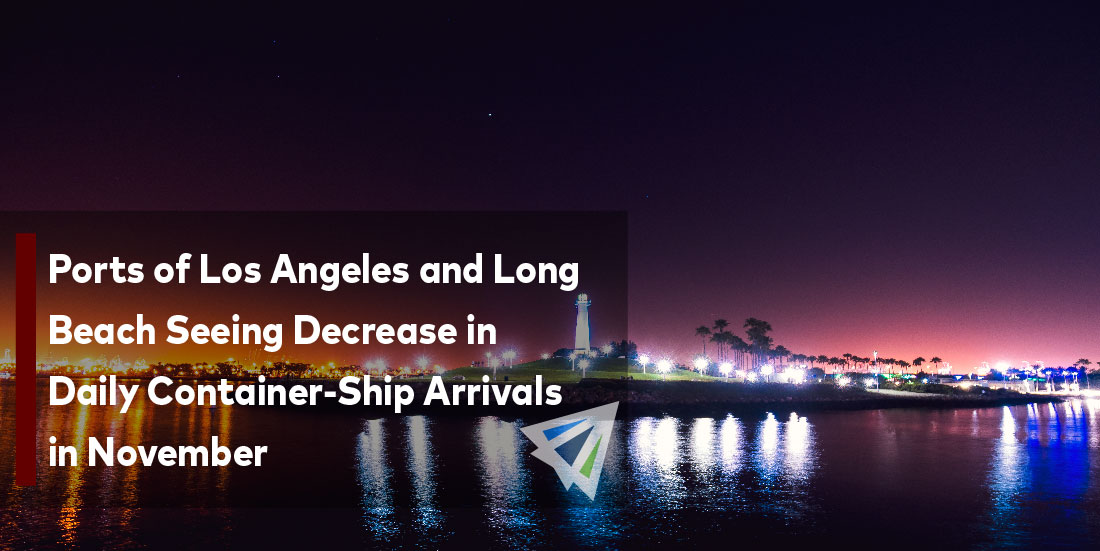Ports of Los Angeles and Long Beach Seeing Decrease in Daily Container-Ship Arrivals in November
All that’s dominated the freight news headlines for the last two years has been about record breaking container volumes, peak season, increasing congestion, and overloaded and understaffed ports. And while the state of the shipping market at large hasn’t changed drastically, things are beginning to take a turn for relief – especially in Southern California.
LA/Long Beach Port Activity Decrease
Los Angeles and Long Beach have been the focal point of the international shipping community for quite some time. They are some of the most active ports in the U.S. and have been experiencing insane congestion and increased import activity since the back-half of 2020. However, in October, things changed a bit. Numbers came out for total imports at 467,287 TEU’s, which was down 8% from October 2020, and down 4% from October 2018 – a good benchmark date for what import activity was like pre-COVID.
However, looking at all the cargo waiting offshore tells a little bit of a different story. Combining the cargo from all the container ships waiting offshore, there’s a total of over 637,000 containers waiting to be unloaded. If the port were capable of handling and unloading all this cargo, LA and Long Beach would have experienced record-breaking numbers in October.
The high number of container ships offshore and increased wait time for docking has created the perception that import activity is at an all-time high. However, these statistics are being caused by logistical issues on the port grounds – not an increase in ship arrivals.
Last week, the number of ships waiting offshore reached a new record at 86 container ships. The average number of ships waiting has rested around 78. But container ship arrival frequency has been decreasing since September as businesses are wrapping up their shipping for the December holidays and peak season is ending.
Continued Struggle for Efficiency
Peak season ending will provide some relief to the ports, but the decrease in import activity is expected to be short-lived, as it will pick back up in February. At this point, further improvement for throughput of containers – both inbound and outbound – will need to be addressed on the port grounds themselves.
Port worker availability, terminal operations, gridlock, and trucker activity are all playing a major part in the congestion at the port. While 24/7 operations are helping to keep containers moving through the port grounds, efficiency still needs to be restored (which is expected to take some time). New CBP and port workers are struggling to keep up with previously established communication and action protocols for AMS reporting and clearing documents. Truckers are struggling to get their appointed containers moved forward on the grounds. Port workers are struggling to get empty containers exported. There’s simply a lack of efficiency, a lot of new workers, and astronomically high numbers of ships awaiting docking and unloading. Shippers should expect the congestion and delays to continue for quite some time soon.
Please reach to our team at InterlogUSA for more information or questions you have regarding your shipping situation.
